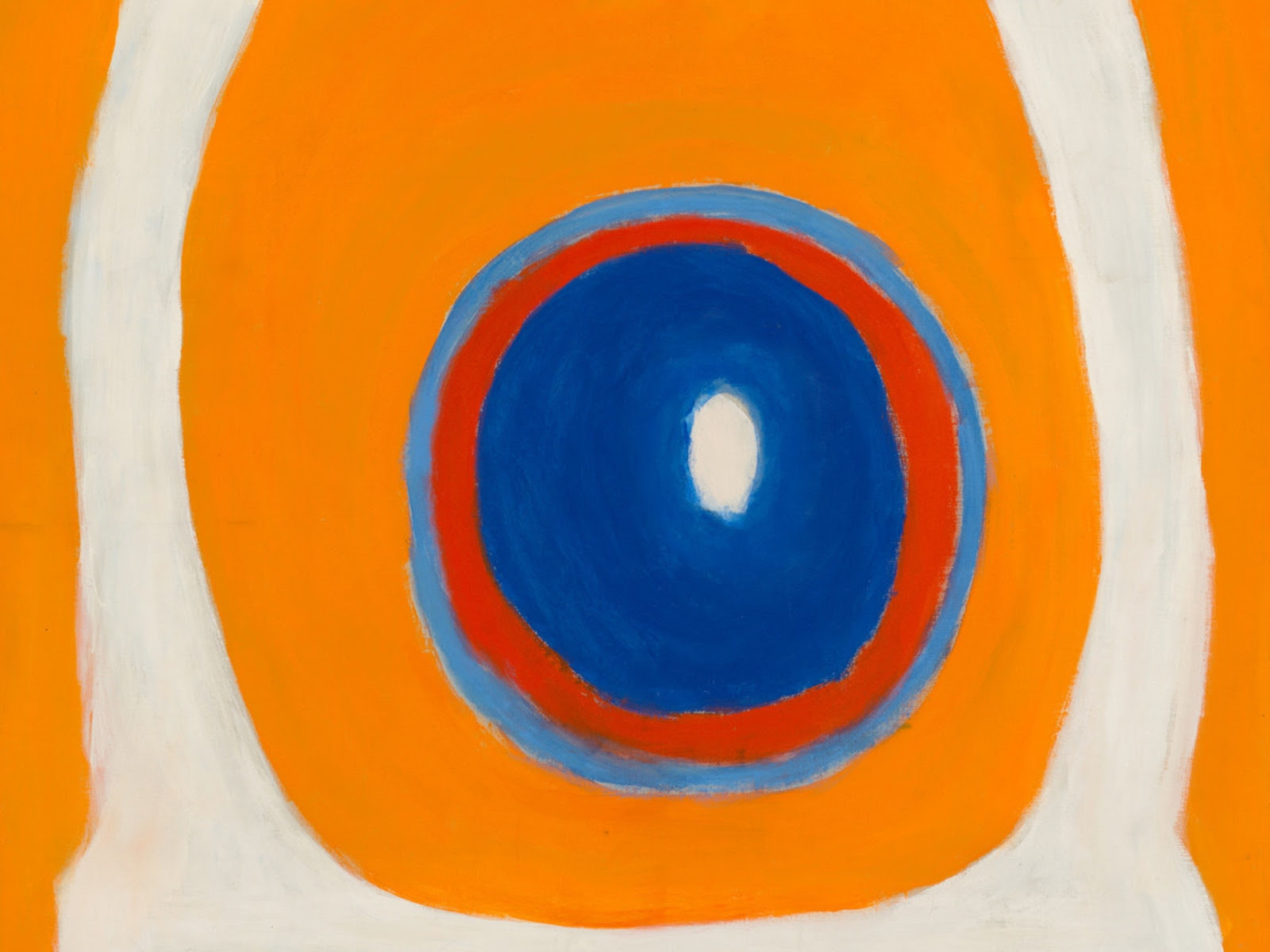Betty Parsons: Reverberation
Press release by Alexander Gray Associates

Reverberation, 1968 (detail), Acrylic on canvas, 110 1/4 x 49 3/4 in (280 x 126.4 cm)
Betty Parsons: Reverberation
at Alexander Gray Associates, New York
February 14–March 15, 2025
Opening Reception: Friday, February 14, 5:00–7:00 PM
Alexander Gray Associates, New York presents Reverberation, the Gallery’s fourth exhibition of works by Betty Parsons (1900–1982), showcasing rarely seen paintings and works on paper from the 1960s. The exhibition underscores Parsons’s contemplative, intuitive style of abstraction, celebrating spontaneity and gesture through organic forms.
After attending the 1913 Armory Show in New York, Parsons resolved at a young age to become an artist, initially studying figurative sculpture before moving on to watercolor. In 1946, she founded the Betty Parsons Gallery and turned unwaveringly towards abstraction the following year. Ceasing to depict how a subject looked, she strived instead to capture “what it made [her] feel.” In 1960, the completion of Parsons’s light-filled studio in Southold, NY catalyzed a pivotal and productive period in her artistic production. The compositions she made over the next decade are marked by bold graphic forms, saturated colors, and fluid contours. Without Greed (1960) is an early example, showcasing curvilinear shapes in distinctive colors freely floating atop a monochromatic background, or perhaps emerging from it. Each visible brushstroke reveals her swift and unhesitating painterly process.
Parsons’s studio, custom-built from the ground up by architect and artist Tony Smith, provided a weekend retreat from the city and a creative sanctuary. The studio’s seaside location overlooking the Long Island Sound was an integral part of Parsons’s creative environment, as affirmed by paintings including Kites (1962) and Sand with Shapes (1964). They feature biomorphic shapes resembling amorphous figures suggesting both maritime locales and psychic landscapes. Other paintings, such as Lavender (1965) and Amber (1969), whose titles betray their vivid hues, signal Parsons’s exploration of the ability of colors to evoke specific emotional states. Increasingly in the 1960s, she deployed a brighter palette while continuing to tap into deeper, unseen forces—whether psychological or philosophical—that connected her to something beyond the ordinary, a vitality she dubbed “the new spirit.”

Sand with Shapes, 1964, Acrylic on canvas, 79 1/2 x 69 in (201.9 x 175.3 cm)
Parsons strived to represent what she called “the invisible presence,” a metaphysical enigma that reflected her belief in art’s power to tap into the “sheer energy” connecting all things. The vibrant orange and cerulean composition Reverberation (1968), from which the exhibition takes its title, illustrates this semi-divine undertaking. Parsons’s work was widely exhibited across the United States and was the subject of a 1968 survey at the Whitechapel Gallery in London, curated by Lawrence Alloway. In an interview with Alloway, Parsons reflected on the instinctive nature of her creative process, explaining, “When I start a painting I try to become a blank and only let an emotion come into me.” She went on to say, “I want to paint an atmosphere that I see out of the window, I try to become a blank when it comes to choice of forms and colors. I go up to the canvas with a brush and suddenly decide and I pick out a gray or brown or whatever the atmosphere is and put it on very spontaneously. That color introduces an idea for another color, and I go on from there.”
Betty Parsons’s work has been the subject of numerous solo exhibitions at Marion Art Center, MA (2022); Art Omi, Ghent, NY (2018); The Pollock-Krasner House and Study Center, East Hampton, NY (1992); the Montclair Museum of Art, NJ (1974); and Whitechapel Gallery, London (1968), among others. Her work has been included in group exhibitions including Friends in a Field: Conversations with Raoul De Keyser, Mu.ZEE, Oostende, Belgium (2022); Abstract Expressionism Revisited, Guild Hall, East Hampton, NY (2019), and People, Places and Things, Parrish Art Museum, Water Mill, NY (2005), among others. Parsons’s work is represented in the collections of the Buffalo AKG Art Museum, NY; High Museum, Atlanta, GA; Carnegie Museum of Art, Pittsburgh, PA; Irish Museum of Modern Art, Dublin; The Museum of Modern Art, New York; National Museum of Women in the Arts, Washington, D.C.; Smithsonian American Art Museum, Washington, D.C.; and the Whitney Museum of American Art, New York, among others. The Betty Parsons Estate is also represented by Alison Jacques, London.